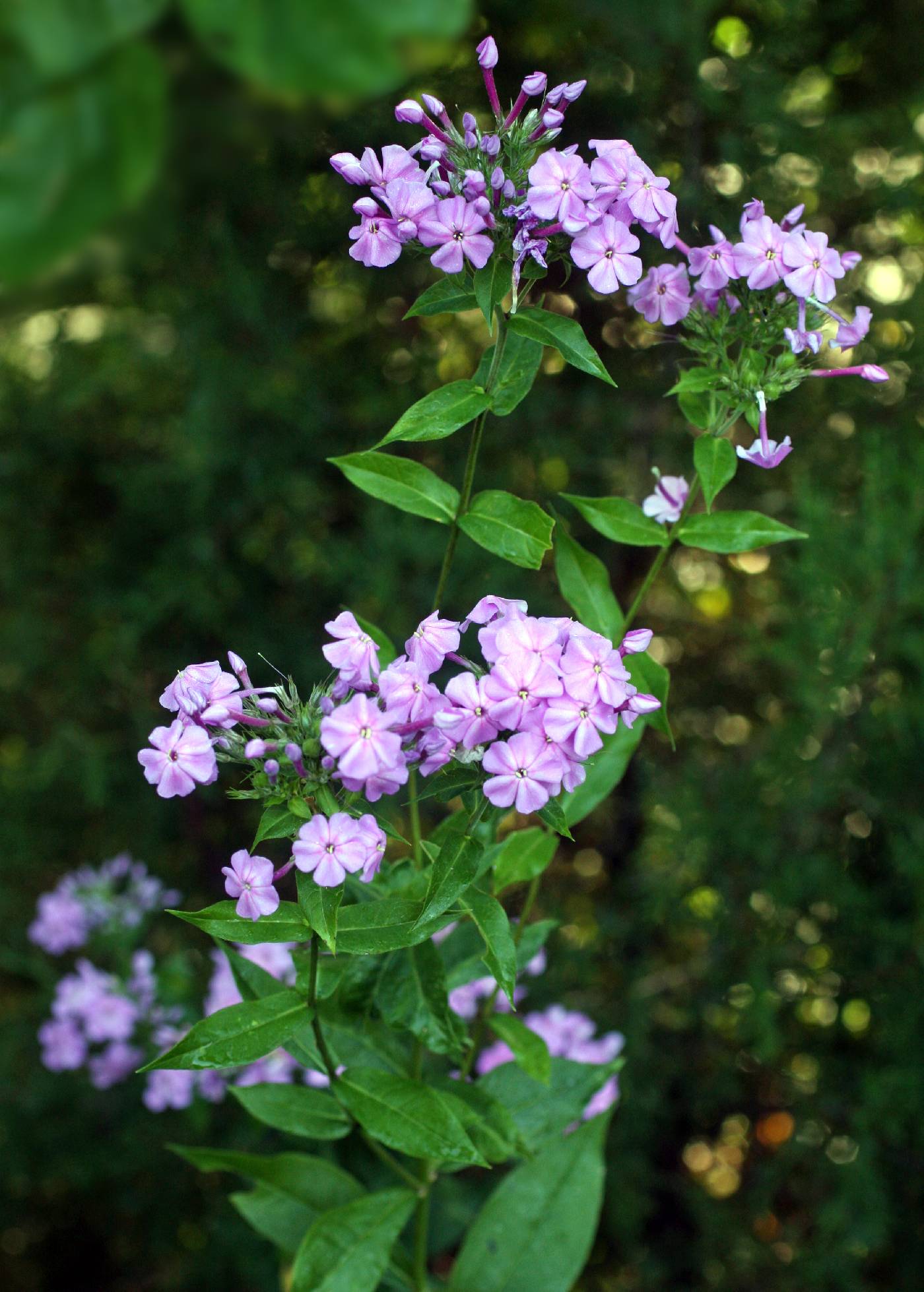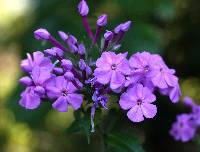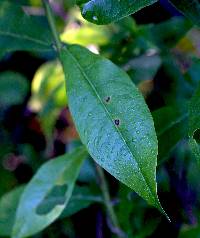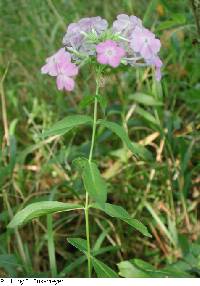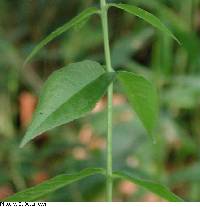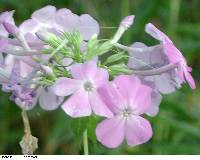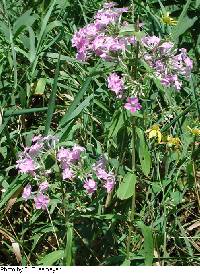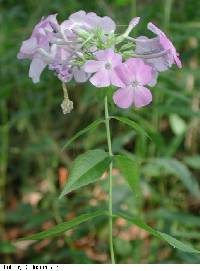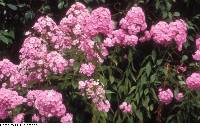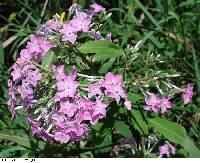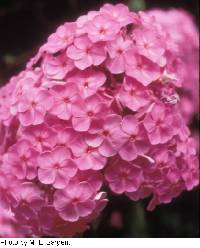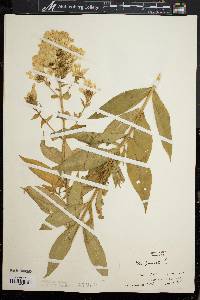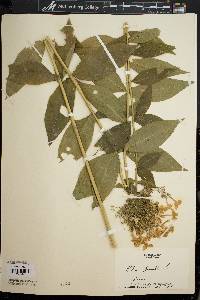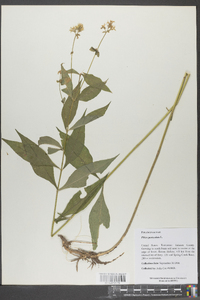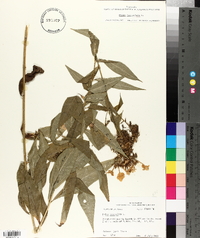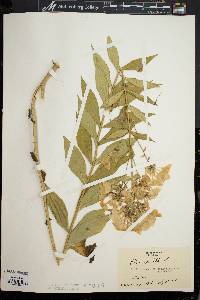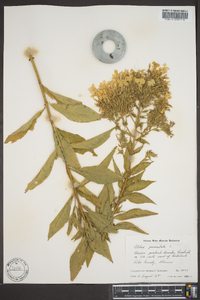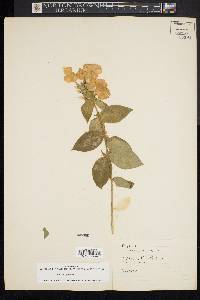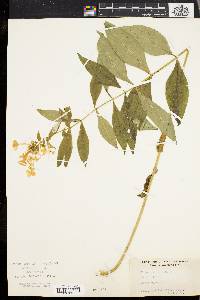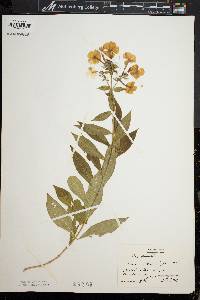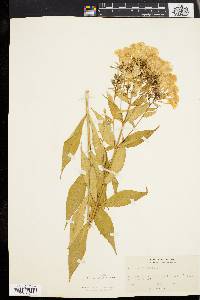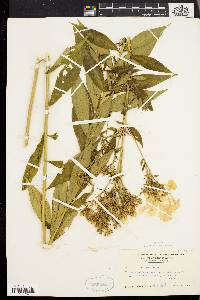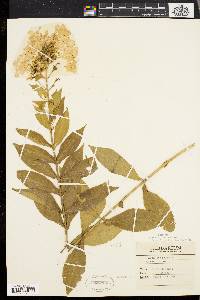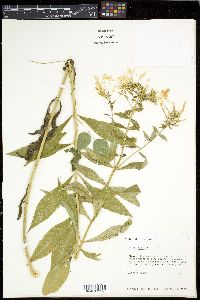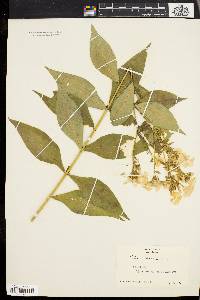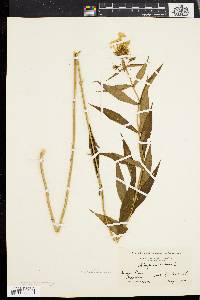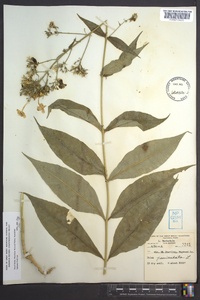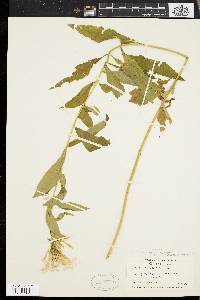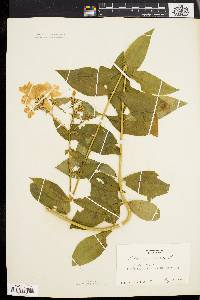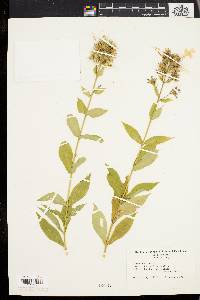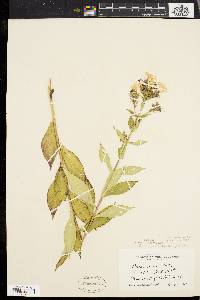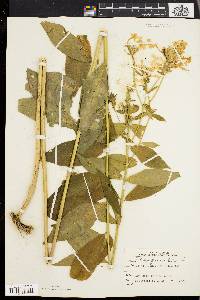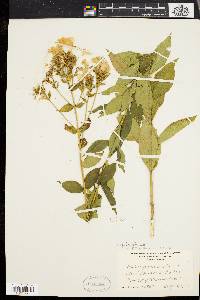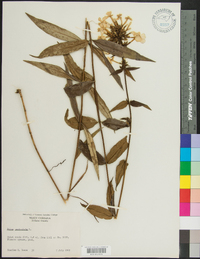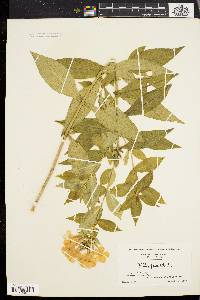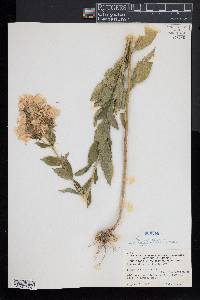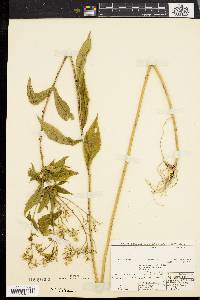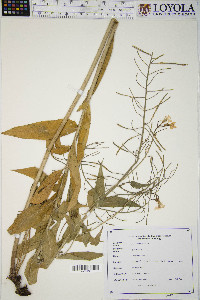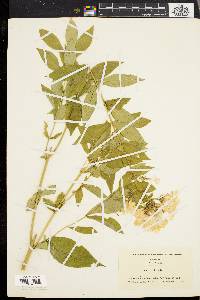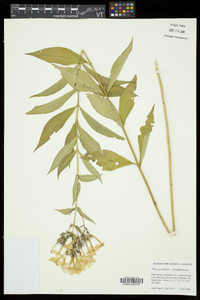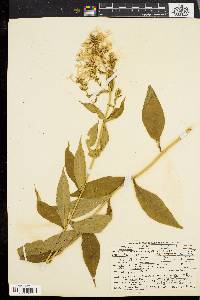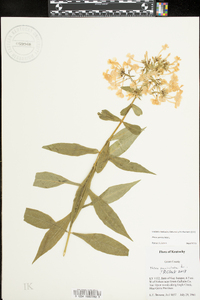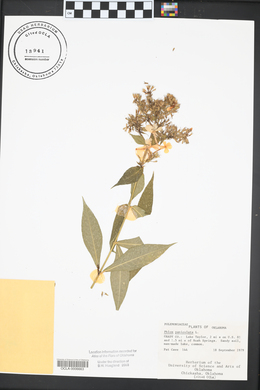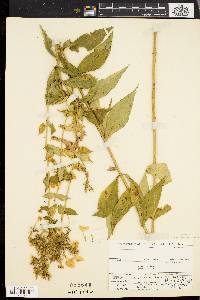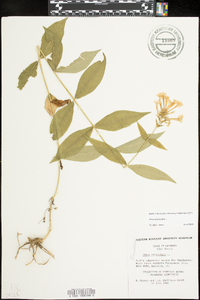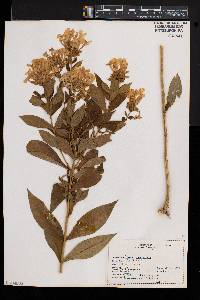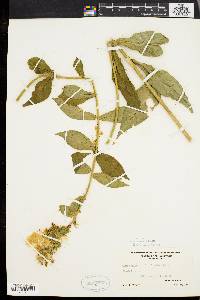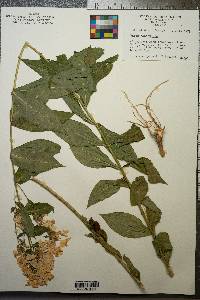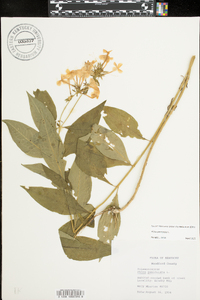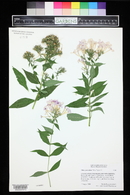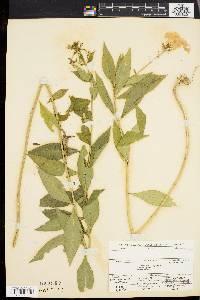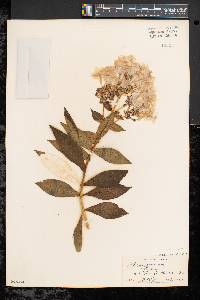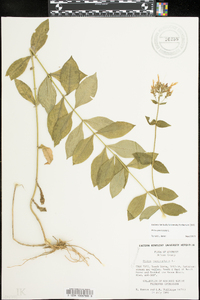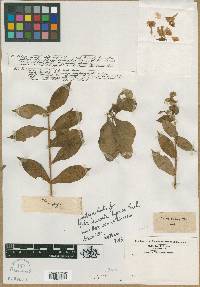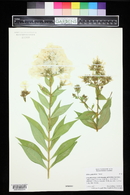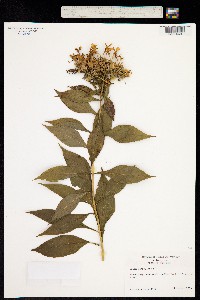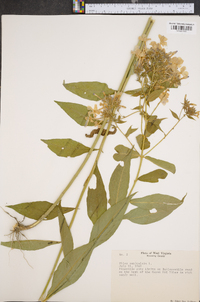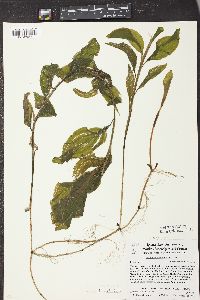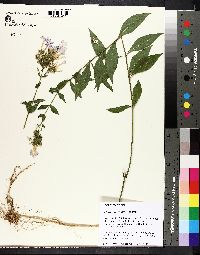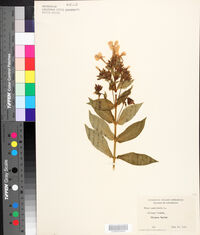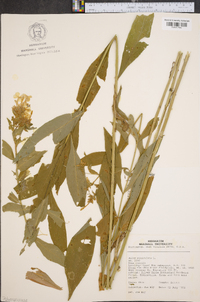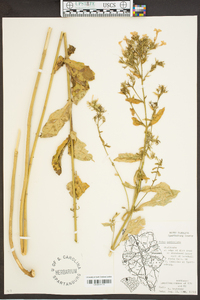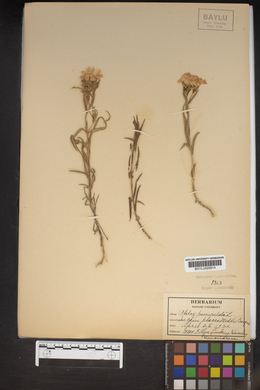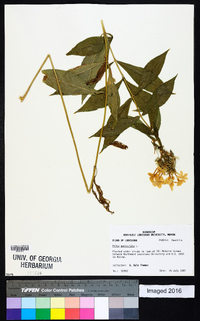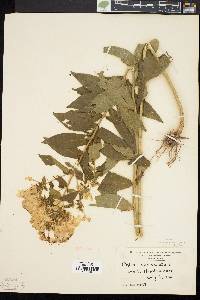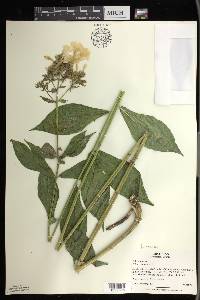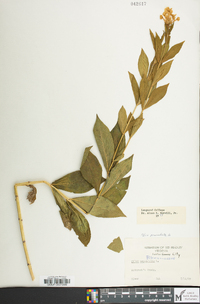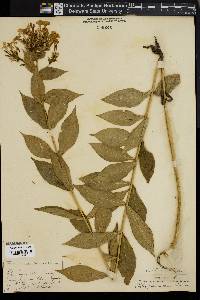
|
|
|
|
Family: Polemoniaceae
Fall Phlox, more...Garden Phlox
[Phlox decussata Lyon ex Pursh] |
Perennial herb 75 cm - 2 m tall Leaves: numerous (fifteen to forty pairs), mostly stalkless (sometimes very short-stalked), opposite near bottom of the stem, but not quite opposite above, with the lower leaves narrowly elliptic, and the upper leaves more lance- or egg-shaped. The leaves are large (largest up to 15 cm long and 5 cm wide), thin with obvious veins, finely toothed, fringed with fine, slender bristles along the edges, and though sometimes hairless, the lower surface tends to be soft-hairy and the upper surface is often bristly. Inflorescence: of huge, multiple-branched, hairless or finely hairy, somewhat open clusters in the upper third of the stem, with hundreds of flowers atop stalks under 1 cm long. Flowers: 1.5 - 2 cm wide, dull to bright purple, pink, or occasionally white, sometimes with a purple-striped center, radially symmetric, with a slender, hairy tube, and abruptly flared lobes. Sepals: five, 0.6 - 1 cm long overall, but fused for about half their length, then separating into narrow, long-pointed lobes with a 1 - 2 mm long, stiff bristle at the tip. Petals: five, but fused into a 1.7 - 2.5 cm long, soft-hairy tube, then separating into 0.7 - 1.2 cm long, 0.5 - 1.2 cm wide, abruptly spreading lobes with non-toothed or jagged tips (but not obviously notched). Stamens: five, attached at different heights along the inside of the petal tube, with creamy-white anthers, which can extend beyond the petal tube. Pistil: with a single, three-chambered, superior ovary; and three, elongate (1.5 - 2.5 cm long, sometimes extending beyond petal tube), fused styles, which separate for only 1 - 1.5 mm before ending in three, linear stigmas. Fruit: a three-valved, three-chambered, egg-shaped capsule with one or several, 3.5 - 6 mm long, ellipsoid seeds per chamber. Stems: several, clustered, often red-streaked, stout, hairless or sometimes soft- or rough-hairy, and arising from a short, thick, mostly non-woody rhizome. Similar species: Phlox paniculata is most similar to P. maculata and P. glaberrima var. interior, but neither of those taxa have veiny leaves with bristly-hairy margins. The remaining species of Phlox in the Chicago Region either have obvious notched petal tips, or very short styles. Phlox amplifolia, which is native to southern Indiana, Missouri and southeast to western North Carolina, is very similar except its leaves are always clearly opposite, the petal tube is hairless, and the inflorescence is covered with glandular hairs. Flowering: June to October Habitat and ecology: Apparently occurring mostly as an escape from cultivation, but naturally preferring mineral-rich and often calcareous soils. The range of this species may include the Chicago Region, but it is suggested interested persons see Wherry 1955. Occurence in the Chicago region: non-native Author: The Field Museum Erect, to 2 m; lvs narrowly oblong to lanceolate or elliptic, 8-15 cm, to two-fifths as wide, acuminate, ciliolate, usually glabrous above, the conspicuous lateral veins confluent to form a submarginal connecting vein; infl often large, of several panicled cymes, densely short-hairy; cal glabrous, or the tube puberulent; cor red-purple, varying to white, 1.5-2 cm wide, the tube usually sparsely hairy; one or more anthers at least partly exsert from the cor-tube; style elongate; 2n=14. Rich moist soil; s. N.Y. to n. Ga., w. to Ill., Mo. and Ark., and often escaped from cult. elsewhere in our range. July-Sept. Gleason, Henry A. & Cronquist, Arthur J. 1991. Manual of vascular plants of northeastern United States and adjacent Canada. lxxv + 910 pp. ©The New York Botanical Garden. All rights reserved. Used by permission. From Flora of Indiana (1940) by Charles C. Deam Infrequent throughout the state except in the northern counties; in wooded flood plains of streams and rarely in wet woods away from streams or elsewhere. I have a narrowleaf form from a wooded cliff. The northern tier of counties in Indiana has been botanized more thoroughly than any other area of the state, yet the species has been found in only a few of these counties because it reaches its northern limit in northern Indiana. …… Indiana Coefficient of Conservatism: C = 3 Wetland Indicator Status: FACU |
|
|
|

